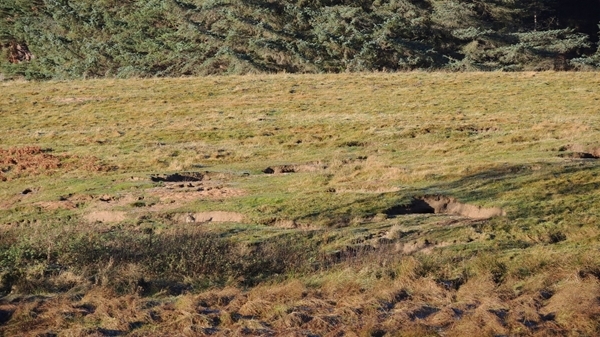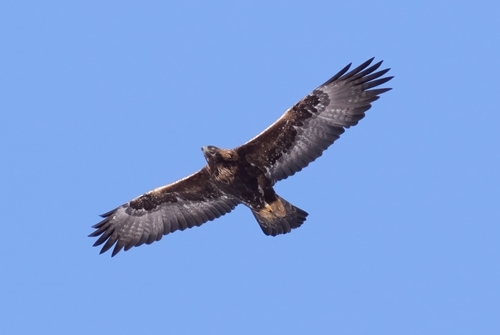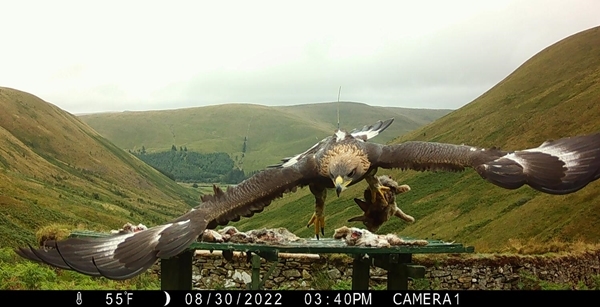By Max Wright, Research Assistant, GWSDF Auchnerran
Whilst in the UK rabbits are widely considered pets, within rural communities they are more often than not regarded as pests. Moreover, there is some evidence to suggest they are not actually native to the UK, with the Romans perhaps responsible for their reintroduction after they likely died out during the last ice age. All of this means they can be a relatively polarising species depending on whereabouts in the UK you are. However, due to novel diseases, rabbit populations have actually declined dramatically by around 43% from 1996 to 2018 – and this skyrockets to an estimated 83% decline for Scotland over the same period.
Nevertheless, here at GWSDF Auchnerran we have the relative rarity of an unsustainably high population. Following initial surveys in 2015, our population was estimated at 20,000 individuals. This would cause exceptional pressures on the ground for any farm, and ours is no exception. To put it into perspective, based on the dry sheep equivalent, the grazing pressure from our rabbits was equal to an additional 2,500 sheep on top of our existing flock of 1,400 ewes.
 Overgrazing and vegetation damage caused by rabbits at GWSDF Auchnerran. (Credit: Marlies Nicolai)
Overgrazing and vegetation damage caused by rabbits at GWSDF Auchnerran. (Credit: Marlies Nicolai)
This creates a vast number of problems, including but not limited to, overgrazing on pasture, erosion of embankments, and destroying existing vegetation cover. Even introducing hedgerows is a serious challenge, as it requires rabbit fencing either side of the hedge, tubbing of each individual plant, as well as constant repairs, just to keep most of the rabbits out and allow the vegetation to grow.
Whilst never an easy decision for any conservation organisation, all this means we must undertake lethal control of the rabbits in order to reduce the population to a more sustainable level. Additionally, this can help prevent the further spread of rabbit diseases such as myxomatosis and RHD, which are largely responsible for the population declines. Subsequently, we have deployed a number of drop boxes around the farm in areas of particularly high rabbit density.
Drop boxes are live capture traps, consisting of a trap door and holding box underground. These boxes are opened and run on a monthly basis for one night, and then checked the following morning, before any captured rabbits are humanely dispatched. These boxes cause minimal stress to the rabbits when run appropriately according to best practice, and, moreover, they have the added advantage of leaving no toxic shot or lead contamination. This means captured rabbits are completely safe to be consumed by other animals, including one of Scotland’s most famous and iconic species, the golden eagle.
Golden eagles have long inspired art and songs and remain a proud part of Scottish national heritage. However, persecution and other threats drove them to extinction in England and Wales, and led to seriously declining populations in Scotland by the early 1900s. Since then, populations have slowly recovered, aided in no small part by staunch conservation efforts.
 Male golden eagle in flight. (Credit: SSGEP)
Male golden eagle in flight. (Credit: SSGEP)
All of this means that we are now delighted to be able to send our culled rabbits to be used as feed for juvenile golden eagles at the South of Scotland Golden Eagle Project (SSGEP). Remarkably, this project has been able to more than double the population of golden eagles in the south of Scotland since 2018. This has been aided in no small part by an understanding keepering community, with zero instances of persecution recorded.
This year has brought the total population to around 39 individuals, the highest the population has been in the area for three centuries. However, as the young eagles settle and establish new territories, they initially require help to feed. This is done by using feeding stations on which SSGEP place the supplementary food, replicating what the adult eagles would do in a natural situation until the youngsters can settle and find food for themselves.
 A young golden eagle taking an Auchnerran rabbit from one of the SSGEP feeding stations. (Credit: SSGEP)
A young golden eagle taking an Auchnerran rabbit from one of the SSGEP feeding stations. (Credit: SSGEP)
By providing SSGEP with our culled rabbits, we not only benefit a wide range of plant and animal species at GWSDF Auchnerran; but also support the conservation and restoration of one of Scotland’s most iconic birds, hopefully helping to preserve populations of this keystone species for many more generations to come.